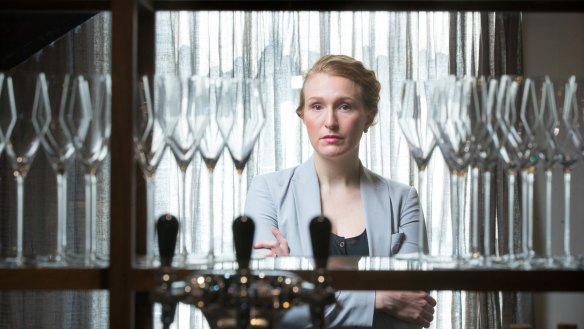The great wine 101: All about fermentation

There's no alcohol without fermentation. But what actually happens to turn a bunch of grapes into your favourite wine?
Fermentation: Just a simple equation?
Yes – and so much more! Fermentation is the simple process whereby grapes are converted into wine. Alcohol is produced along the way, certainly, but also produced are those complex flavours that make drinking wine a lot more interesting than eating grapes. The starting ingredients are sugar (present in grapes) and yeast (either ambient or inoculated). The yeast consumes the sugar, and the output is alcohol and carbon dioxide. In most ferments, the wine is permitted to ferment until it is dry (has no or very little residual sugar left), and the carbon dioxide dissipates into the ether. Voila! A dry, still wine is born.
HOW TO TALK FERMENTATION:
At a restaurant
We'd like to start with some Champagne-method sparkling wine for under $100. Can you help us out?
There are several methods to making sparkling wine, but the one offering the highest quality is used in champagne. It involves a second fermentation that takes place in the actual bottle in which the wine is sold. Remember how fermentation creates alcohol and carbon dioxide? If that CO₂ is trapped in a pressurised environment – like a bottle – instead of being able to dissipate, it sticks around as bubbles in the wine and champagne is born! But our friends in northern France aren't the only ones employing this process. Cava, Franciacorta, and many Australian sparkling wines also use it (with much cheaper results).
At a bottle shop
How can I tell if this wine is sweet or not?
This is the perennial question when scanning bottles of riesling on a wine store shelf. If we go back to our trusty fermentation equation (sugar + yeast = CO₂ + alcohol), then less alcohol in the finished wine means will be more unfermented sugar. So, if you pick up a bottle of riesling and the label states 13% alcohol, then that wine will almost always be dry (or close to it). If the alcohol is south of 10%, there's a good chance you're looking at a sweeter wine.
At a winery
At what point in the fermentation process do you fortify your wines?
You will get some serious jaw-drops if you let loose with this knowledgeable question on your next winery visit. A fortified wine means it has a distilled spirit added to it. Usually these wines are sweet, but not always. The important concept to grasp is that a fermentation will halt when fortification occurs: the yeast cannot survive at such a high alcohol level, so they die off and stop converting sugar to alcohol. Thus, the point at which fortification occurs corresponds to the sweetness of the wine. If a wine is fortified early on or prior to fermentation – like Pineau des Charentes, Rutherglen Muscat and port – it will be quite sweet. If it is fortified later in fermentation, like madeira, or afterwards, like sherry, it will be medium-sweet to bone dry (respectively).
Jane Lopes is wine director at Attica and author of Vignette.